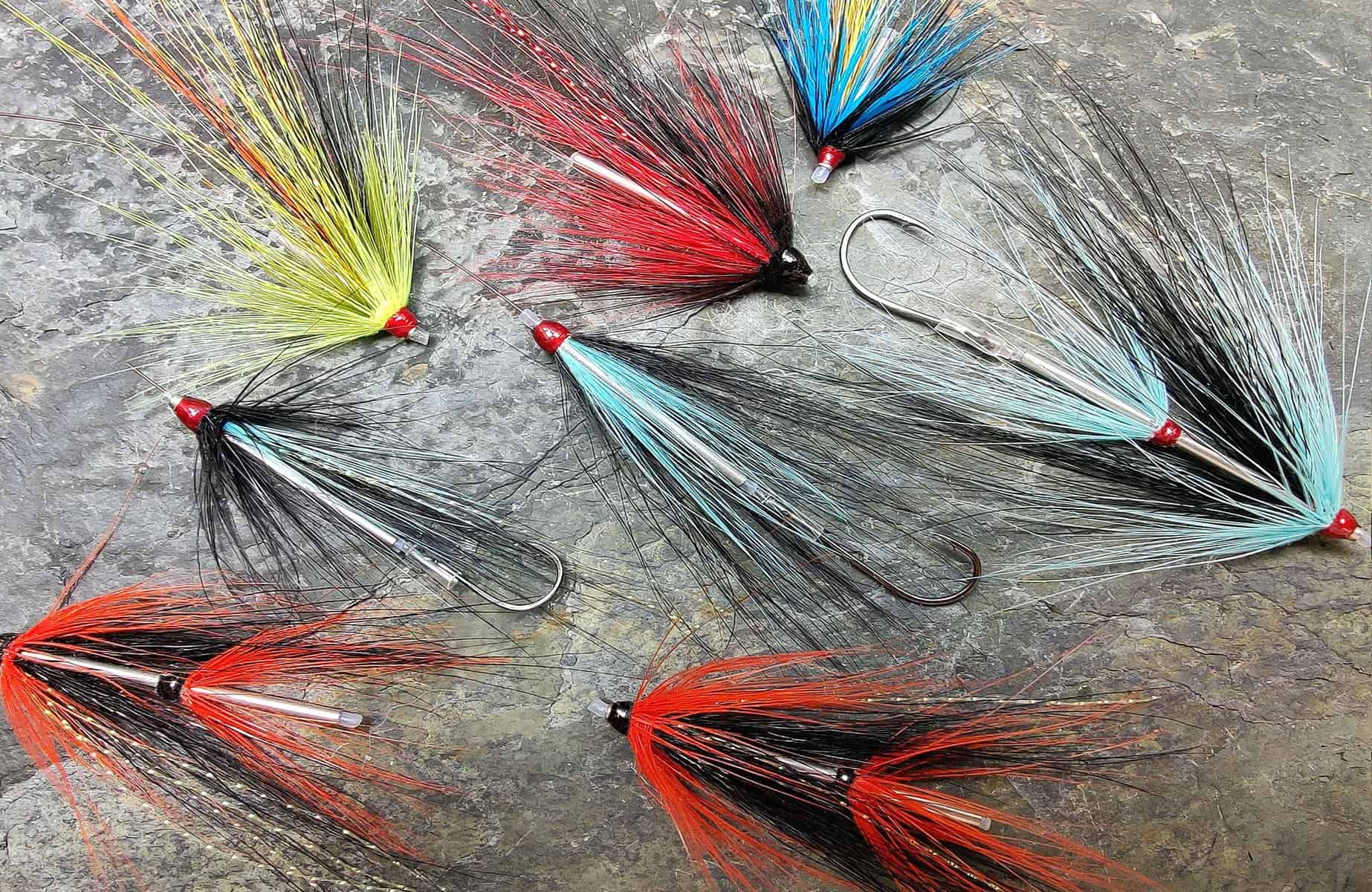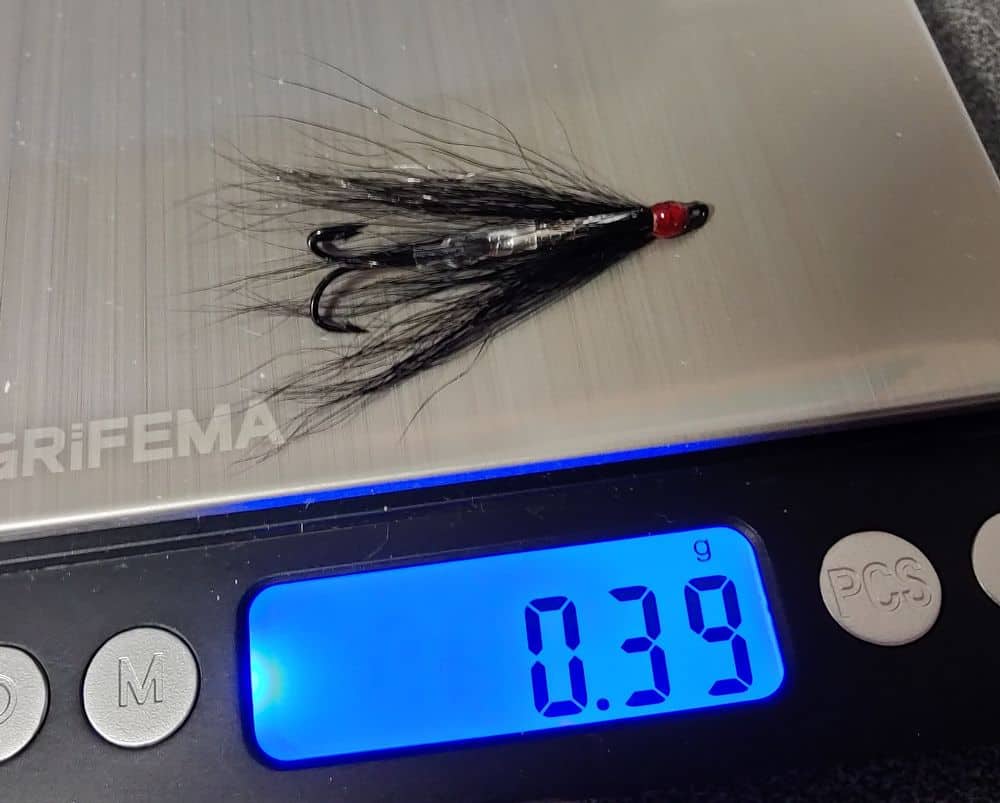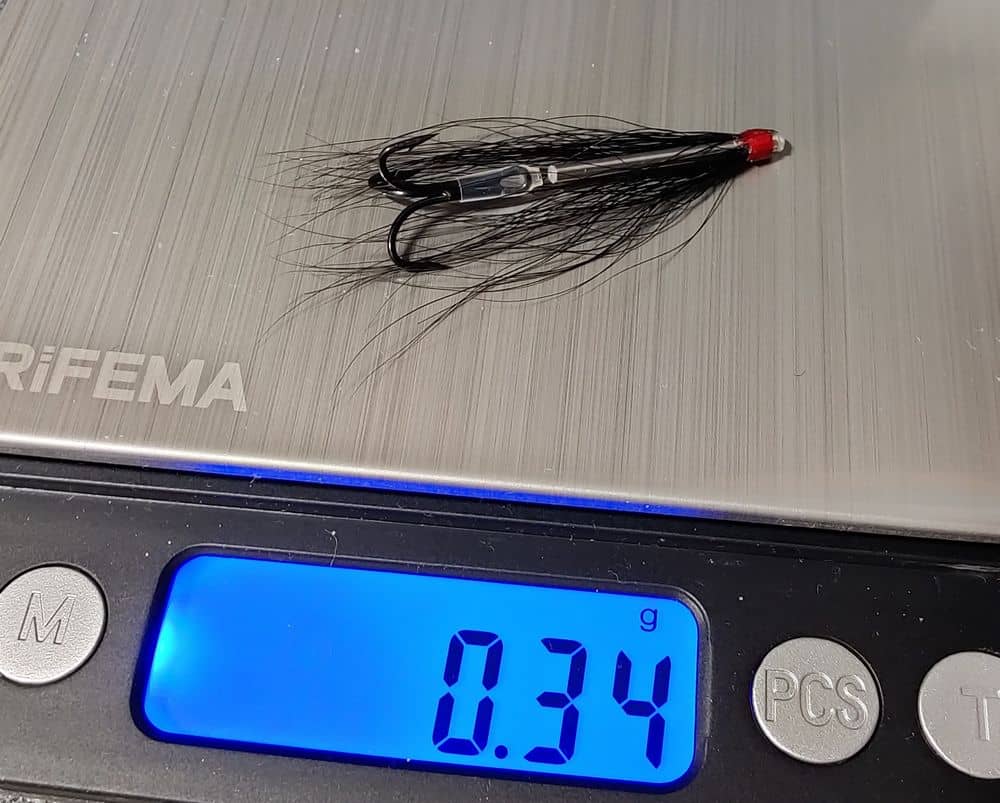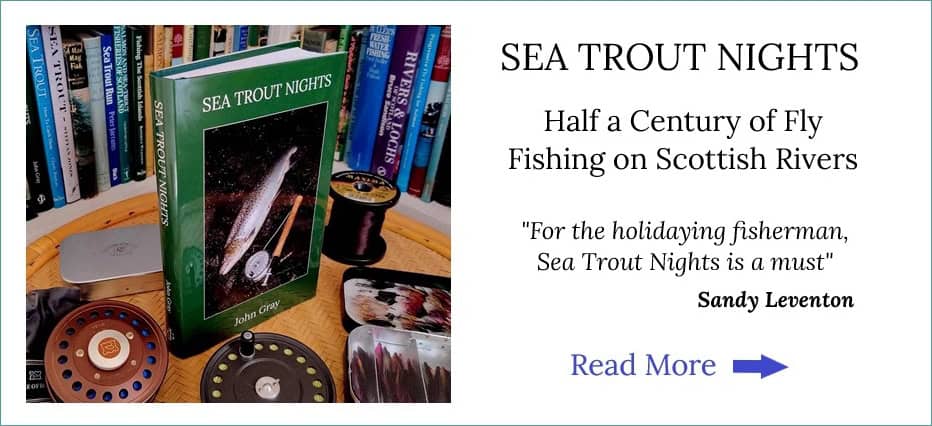Needle Tubes and Needle Tube Flies
Following on from the development, in the late nineteen nineties, of the Needle Fly , which proved extremely effective for both salmon and sea trout, I continued, in collaboration with the late Dave Wallbridge, to experiment in the development of slim tube flies, initially with night sea trout fishing in mind. Our experiments produced the micro tube fly and led ultimately, in early 2008, to the development, by Grays of Kilsyth, of the ultra slim stainless steel Needle Tube . Needle tubes are the slimmest plastic lined metal tubes currently available to the fly tier and allow the creation of extremely thin salmon, sea trout and steelhead tube flies, in diameters of either 1.5mm or 1.8mm and in lengths from 10mm to 40mm.
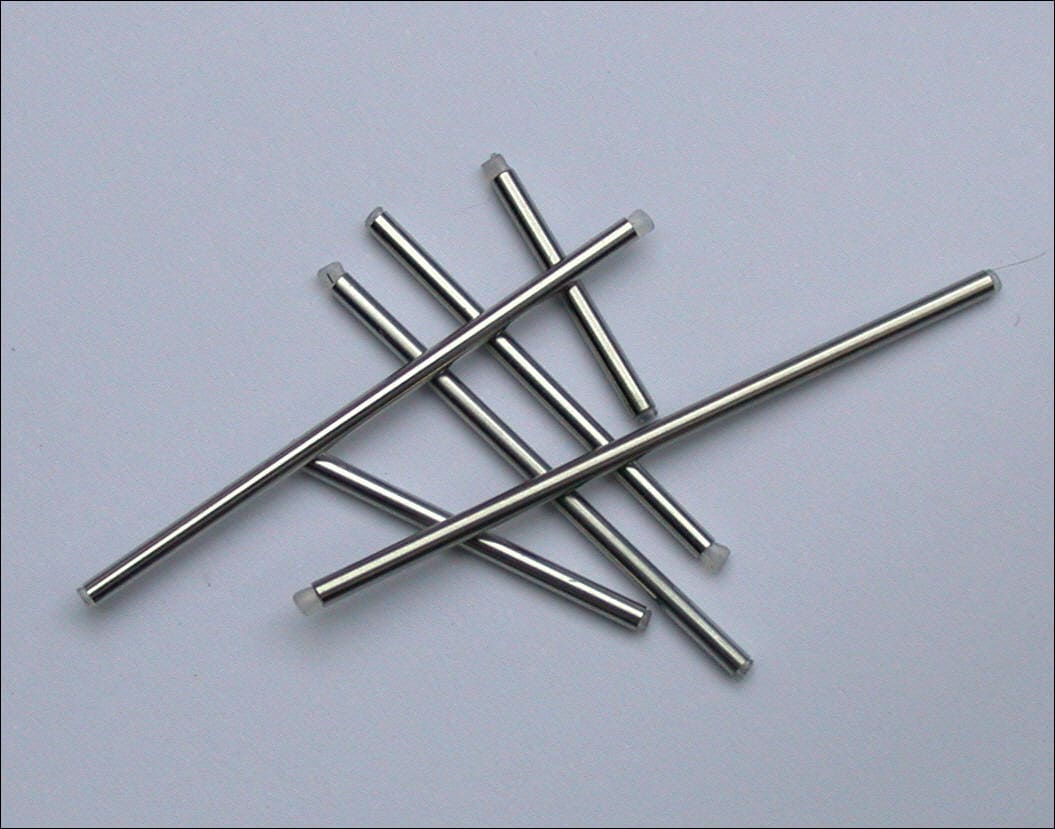
Needle tubes may be dressed very simply in a variety of lengths and weights to create a good range of sea-trout, steelhead and salmon tube flies to suit virtually all river conditions the fly fisher might meet. The ultra-slim stainless steel tubes (in 1.5mm and a slightly heavier 1.8mm diameter) sink more readily than plastic or aluminium tube flies but fish a little higher in the water, and are more easily cast, than the heavier brass and copper tubes.
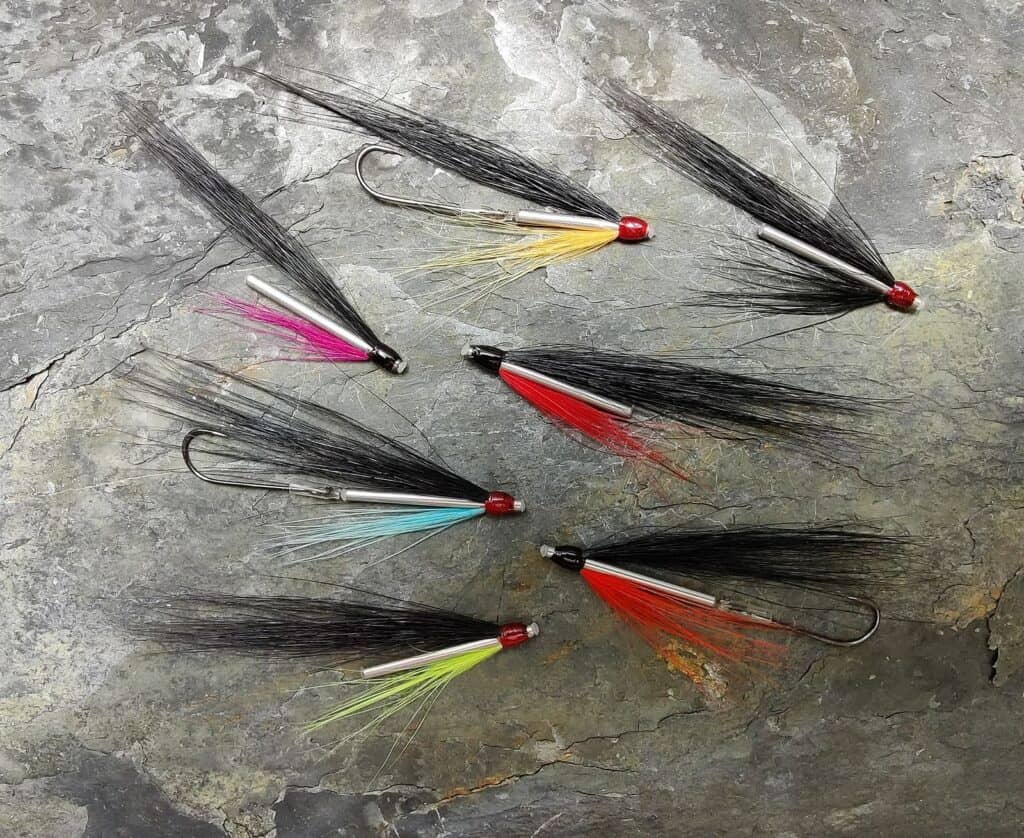
Very small and slim minitubes for low water conditions may be dressed on 10mm tubes of only 1.5mm diameter, while the variety in needle tube sizes allows the fly tier to create a range of lengths, weights and styles of tube flies not only for salmon, sea trout and steelhead but for other predatory species such as pike and bass and a variety of saltwater species.
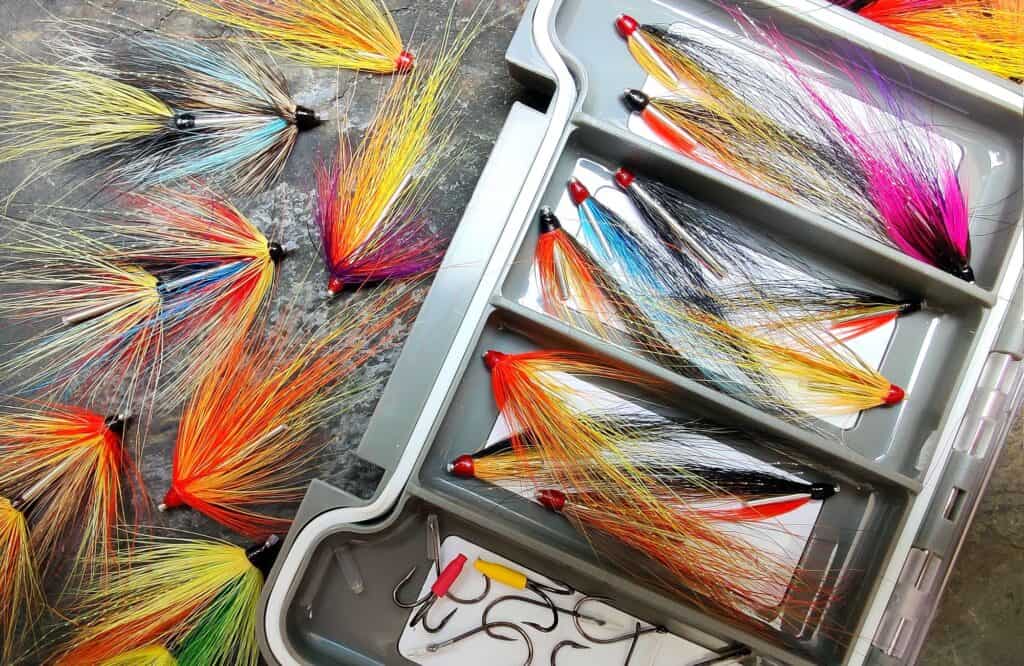
The longer needle tubes offer a viable alternative to the Waddington shank, allowing a long slim lure to be created which will fish at about the same depth as the Waddington lure, with a similar slim profile but with the simplicity and practicality of the tube fly.
Waddington or Needle Tube Fly?
The Waddington lure was devised by Richard Waddington in the middle of last century. In “Salmon Fishing”, published in 1947, he writes, “My ideal salmon fly, however, is quite revolutionary. The shank will remain a steel bar – though were it not for the weight I should prefer something pliable like a heavy nylon strand. This will be linked with a plain loop to a small triangle. The fly will not be dressed in the normal way. The body will be the same but the wing will disappear to be replaced by plenty of hackle dressed all round the fly so that whichever way it is turned it will have the same appearance.
I surmise that this fly will look more natural in the water; that the small triangle is less obvious than a large hook and that once the fish is hooked it will give a better hold. The link in the shank will obviate much of the strain and movement in the hook.”
The “Waddington” later became popular with those salmon and sea trout fly tyers seeking to create a long bodied, medium weight salmon or sea trout fly but with a slimmer profile than flies dressed on conventional tubes (copper, brass, aluminium or plastic), which have a typical diameter of 2.5mm to 3mm. While the Waddington lure (dressed on a Waddington shank) does have a slim profile and allows the use of a relatively small treble hook, it has two disadvantages. Firstly, the Waddington is not so easily dressed as a tube fly and, secondly, the treble (or single or double) hook is not so easily replaced when damaged.
The Needle Tube offers, I think, the best of both worlds. Made from ultra slim stainless steel tubing, the type used in the manufacture of hypodermic needles, they have outside diameters of only 1.5 mm and 1.8mm and are available in lengths from 10 mm to 40 mm.
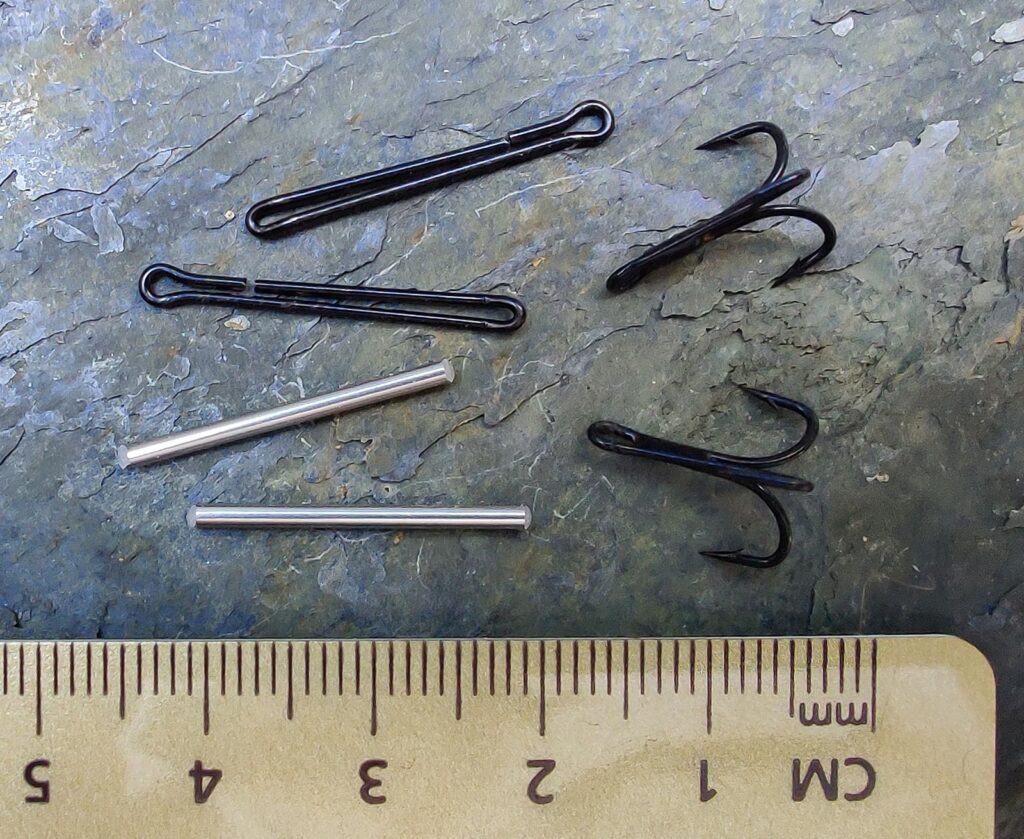
I have found the dressing of Waddington shanks quite fiddly and I was never happy with my efforts. The rear end of the dressing and the attachment of the hook always presented difficulties which I never managed to solve to my satisfaction. The Waddington shank may be dressed and the hook at the rear may be attached in one of the following ways, none of which seemed to me to be satisfactory:
- The hook is fitted into the rear end of the Waddington shank and the body dressing is applied just short of the split in the shank. The hook is allowed to hang freely, allowing for the relatively easy replacement of a damaged hook.
- The hook is fitted and the dressing is applied over the full length of the shank (covering the split in the shank) and the hook allowed to hang freely. To allow a hook change, the dressing must be removed from the rear of the shank.
- The hook is fitted and a strand or two of stiff nylon used to join the hook to the shank to hold the hook in line with the shank. The dressing is then applied, partially or completely, over the shank. To replace the hook, the nylon stiffener must be cut off, the hook replaced, the nylon stiffener retied. This is not really practical if the full length of the Waddington shank has been dressed over the nylon stiffener.
- The hook is fitted, with a length of silicone, PVC or heat-shrink tubing (as in the example shown below) added over the hook shank, and the dressing applied to the Waddington shank, again stopping short of the gap in the shank, to allow for hook replacement. The tubing is then slid partially up the rear of the Waddington shank when the dressing is completed to hold the hook in line. To replace the hook, the tubing is slid down the hook shank (or heat shrink tubing cut off) before replacing the hook and tubing.
- The hook is fitted, with a length of silicone, PVC or heat-shrink tubing added over the hook shank, and the dressing applied over the full length of the Waddington shank. The tubing is then slid partially up the rear of the Waddington shank when the dressing is completed to hold the hook in line. To replace the hook, the dressing must be removed/reapplied from the rear of the shank, before replacing the hook and tubing. Again, not really practical.
- The Waddington shank is dressed over the full length with no hook fitted. The leader is threaded through the Waddington shank eye and down through the rear end, then through a length of silicone or PVC tubing before tying on the hook, which is then held in place by the silicone or PVC tubing, as in a tube fly. If using this method, there is a risk while casting of the hook being pulled too far into the tubing, causing the hook to fish out of line with the Waddington shank.
- The hook is fitted to the rear of the Waddington shank via a small split-ring. The dressing is then applied to the full length of the Waddington shank, covering the split in the shank. The hook is allowed to hang freely on the split-ring and may be easily replaced when damaged, without having to redress the Waddington shank. A split-ring might also be used in this way to replace a damaged hook which has been attached by any of the above methods. The damaged hook on any Waddington could be cut off with pliers before attaching a split-ring and new hook, with the hook hanging freely on the split-ring.
- In recent years, the Waddington shank has been used to form the basis of an Intruder style of fly (or Secret Weapon type of hook attachment), whereby a rear loop of wire, braid or nylon is first attached to the Waddington shank, and a single hook attached to the loop, before the fly is dressed. The hook can then be fairly easily replaced if damaged when fishing. This is a fairly elegant, workable solution but such an arrangement has inherent disadvantages. The fixing of the flexible loop and the dressing of the shank can be a fiddly business, while its stability, orientation and durability when fishing cannot always be relied upon. The hook may not always lie straight, directly in line with the fly; a loop of soft braid may hang down below the horizontal and may have to be somehow stiffened, for example by reinforcing it with a silicone or PVC tube linked to the rear end of the wire shank; while a wire loop may be prone to kinking. In addition to these problems, the dressing on the wire shank, over which so much care, time and attention has been taken, may be easily damaged by a fish’s sharp teeth, a potential problem with all flies dressed on wire shanks, regardless of method of hook attachment. Flies dressed directly on hooks, of course, suffer from the same disadvantage.
The Benefits of Needle Tubes over Wire Shanks
An ultra-slim tube, such as those shown above, with a diameter similar to a Waddington shank, seemed to make more sense, producing a lure with a similar weight and profile to the Waddington, with an easily replaceable hook and which was much simpler to dress.
The needle tube offers the following advantages over the Waddington lure and an additional option for those who like tube flies for salmon, sea trout and steelhead fishing:
- With outside diameters of only 1.5 mm and 1.8mm, Needle Tube Flies, particularly the 1.5mm tubes shown above, are as slim as a dressed Waddington shank and much slimmer than conventional tube flies. (Only a Needle Fly, dressed on a sewing needle, has a slimmer body)
- Made from plastic lined stainless steel, the needle tube is comparable in weight to a Waddington lure, while being lighter than a copper or brass tube and heavier than an aluminium or plastic tube. As illustrated above, a fly dressed on a 1.5mm diameter needle tube will be marginally lighter in weight than a fly dressed on a standard Partridge Waddington shank of the same length, while a fly dressed on a needle tube of 1.8mm outside diameter will be marginally heavier. They will all fish at similar depths, marginal differences in bouyancy depending largely on the bulk and density of the fly dressings.
- The needle tube, held in a suitable tube fly vice, is more easily dressed than a Waddington shank.
- The polished stainless steel needle tube may be left undressed to create a simply dressed, slim, silver bodied lure or it can be dressed in the traditional manner.
- The tube fly hook – treble, double or single, barbed or barbless – can be easily changed when damaged or to suit circumstances.
- A silicone hook link may be used to hold the hook securely in place while offering great flexibility and minimum “leverage”, or the hook may be allowed to swing freely, with the aid of a heat-shrink Knot Guard.
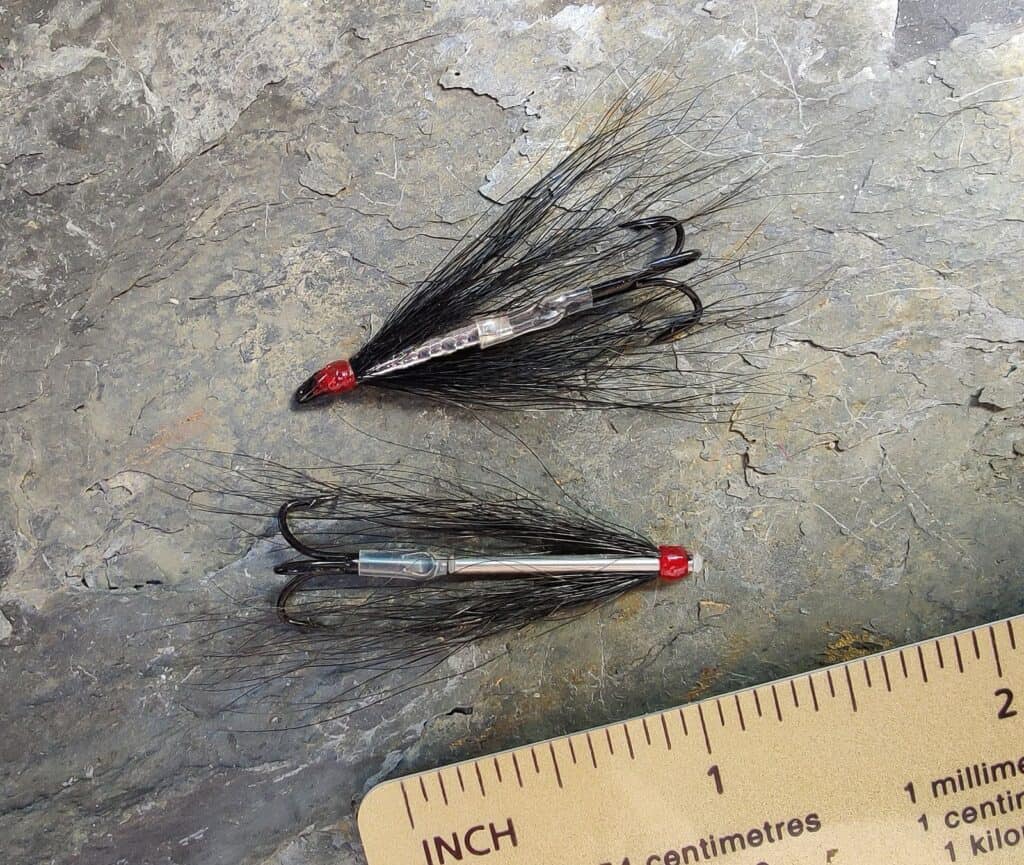
The needle tube, then, offers the slimness of the Waddington lure with the simplicity and convenience of the tube fly.
Waddington shanks are often used as a base for tying Intruder flies for Steelhead and Pacific salmon, owing ot their slim profile and weight. Stainless steel needle tubes offer a more easily dressed option for tying Intruder style lures. The small selection of Intruders shown below have been dressed on needle tubes of length 25mm and diameter 1.5mm.
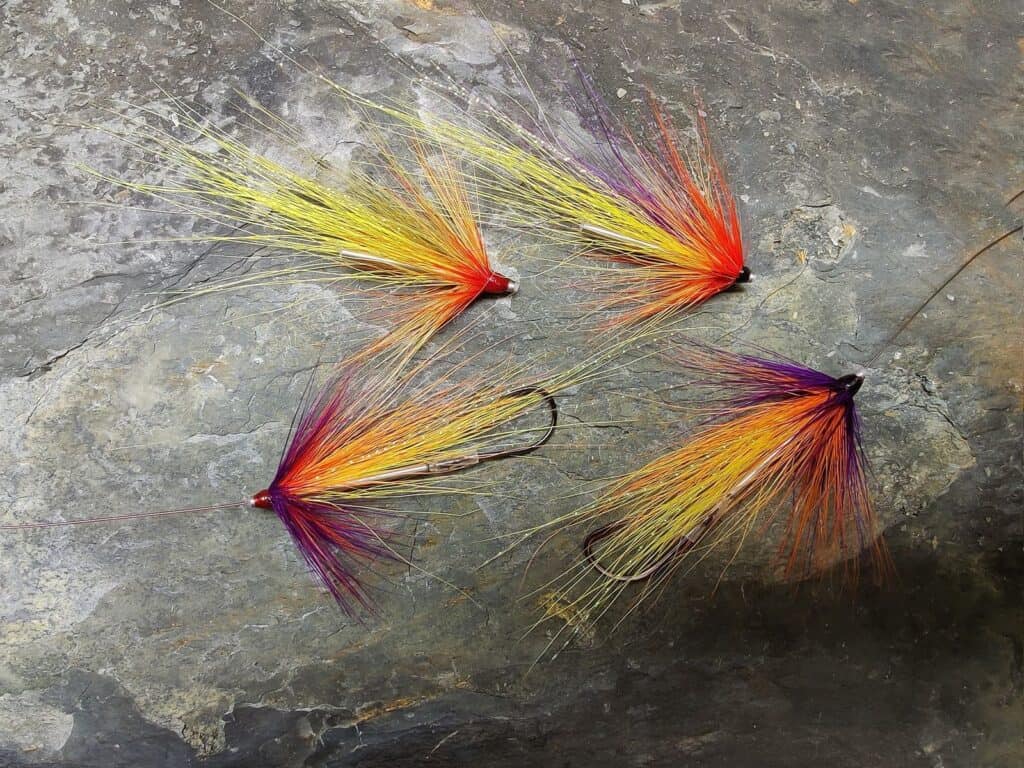
The longer needle tubes are ideally suited to the tying of extremely slim sea trout lures, a simple alternative to the sea trout snake lure, as illustrated in the photograph below.
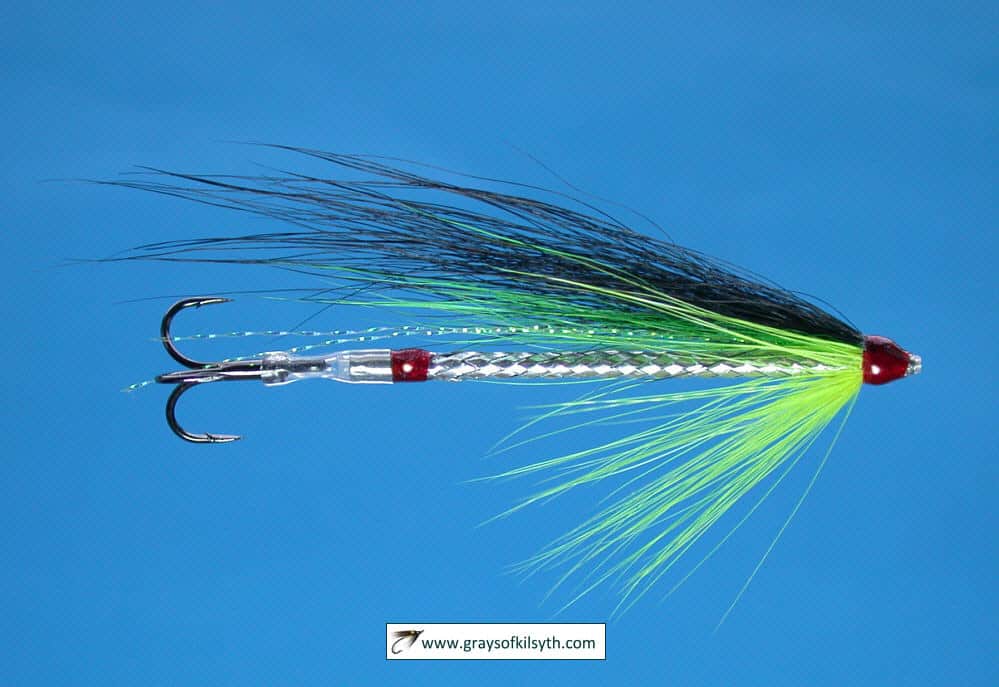
Needle Tube Flies may be armed with single, double or treble hooks, barbed or barbless, according to circumstance and preference. See, for example, the tying of The Tingler , a simple tube fly for sea trout night fishing, employing a single hook, which may be dressed for added attraction or to increase the length of the lure while adding minimal weight to the rear end of the tube fly.
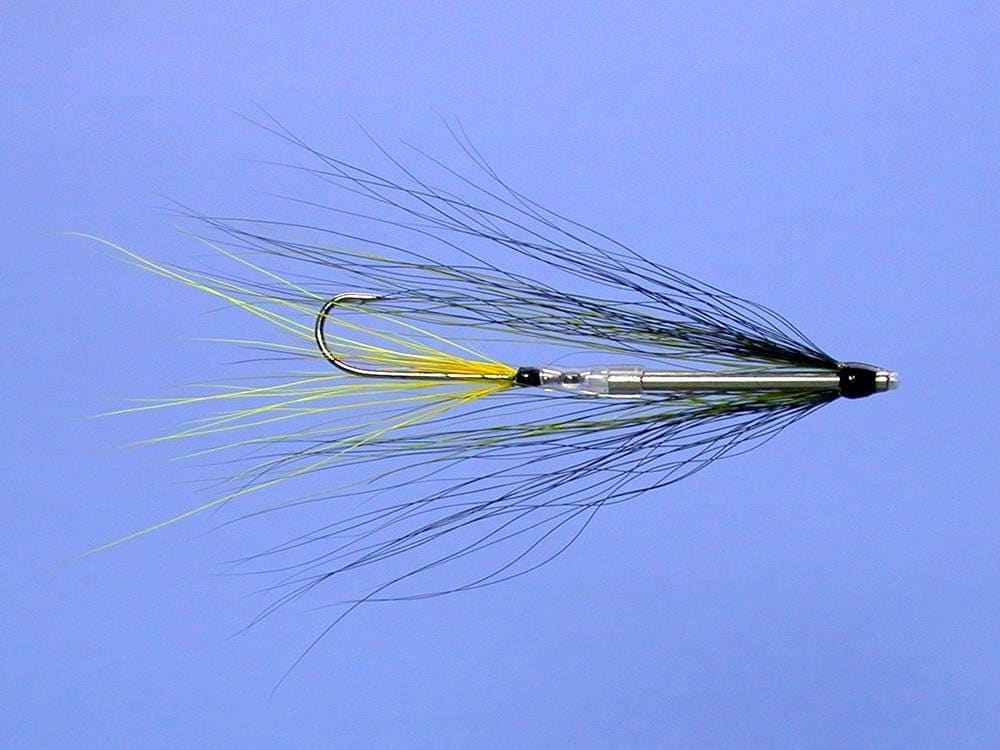
Fly Fishing with Needle Tube Flies
In the succeeding years, flies dressed on needle tubes have accounted for some notable catches of sea trout, salmon and steelhead, as described in Needle Tube Fly Fishing . They continue to do well for both salmon and sea trout. I was delighted to hear news, in early June 2013, of a remarkable catch of sea trout, taken in one night session by Mr Julian Sharpe, Chairman of the Dart Angling Association, from the Totnes Weir pool of the River Dart in Devon on a needle tube fly of his own dressing. The catch consisted of four sea trout, fresh off the tide, weighing 4.5 lbs, 5.5 lbs, 8 lbs and 12 lbs. Truly a catch of a lifetime.
Needle Tube Flies for Sea Trout
The first Needle Tube Fly was in fact devised as a long, slim lure for late night sea trout fishing, variants of which are shown below.
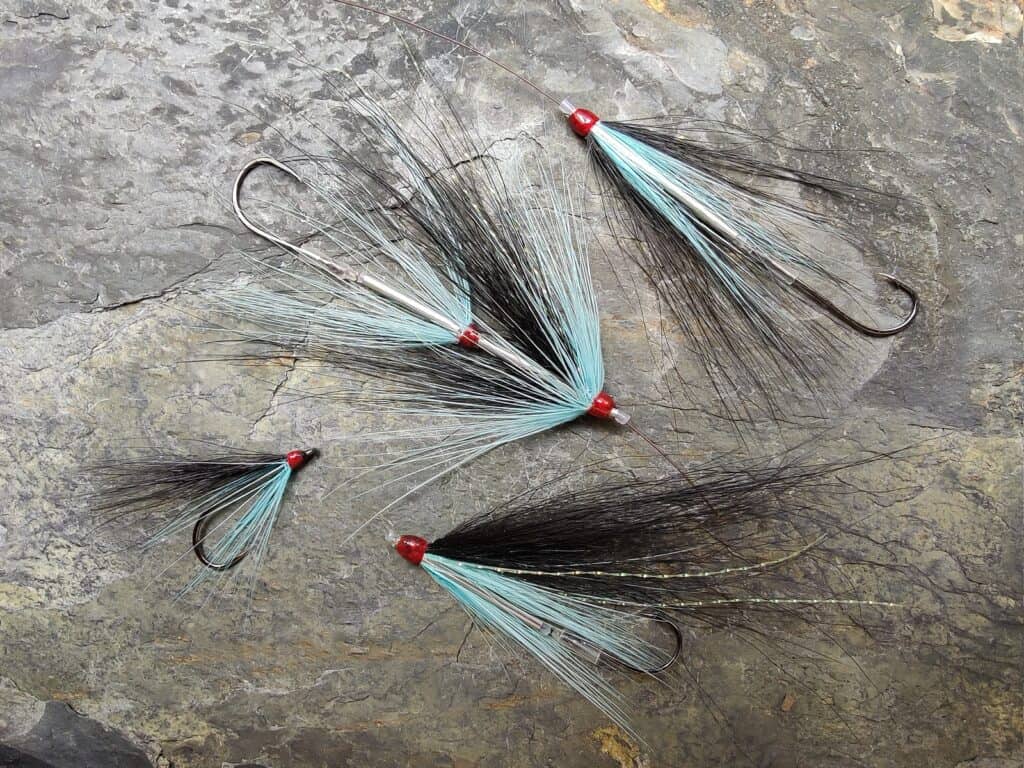
Needle Tubes for Salmon
The Needle Tube has proven extremely adaptable in the creation of fine tube flies for Salmon as well as for sea trout and steelhead. One great benefit of the needle tube to the fly tyer is that it requires no body dressing and is very simple dressed, as in the examples below.
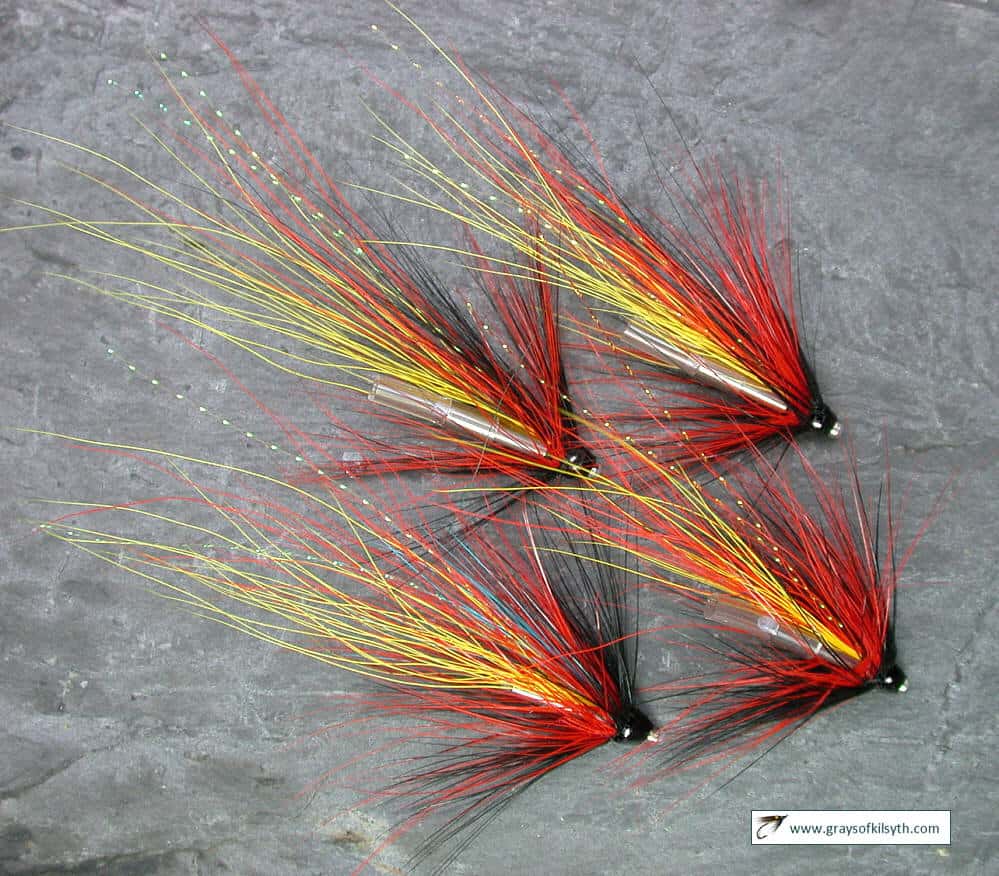
For more examples of Needle Tube Flies for salmon, steelhead and sea trout fishing, see the links in the top menu of this site Tube Flies
